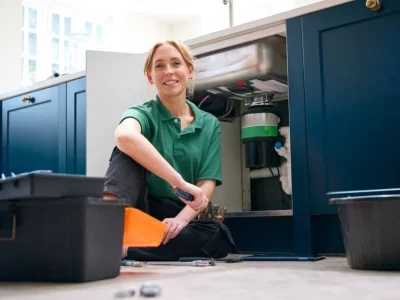There is a growing interest in electric backup sump pumps. They alleviate the concern of returning home to a waterlogged basement following a flood or heavy rainfall.
A common feature in houses is the presence of basements equipped with a drainage system surrounding the foundation, which serves the purpose of intercepting ground water. In certain cities and towns, the house drainage system is linked to the city sanitary sewer system. However, it is more common for the drainage system to direct water into a sump located in the basement.
Inside the sump, there is an electric-powered pump that effectively transports water to the outdoors and safely releases it away from the house.
The sump pump serves as the primary means of preventing water from entering the basement. However, there are certain situations where it may cease to function properly and cease pumping. The most common issue is a power outage from the utility provider. This situation frequently occurs during thunderstorms and flooding incidents, when the sump pump becomes most necessary.
Having a backup sump pump is a wise decision for situations when no one is at home, such as during vacations or travel. In addition, a backup pump can be useful in cases where the amount of water going into the sump rises above the capacity of the primary pump. Know more about Zoeller M53 mighty mate sump pump
A typical electric backup sump pump:
The backup pump system typically consists of a 12-volt direct current (DC) motor that is powered by a battery. This battery is connected to a customized trickle charger. A standard battery charger is not suitable for this kind of installation, unless it is only used in emergency situations.
To ensure protection against water damage, it is advisable to position the charger approximately 3 to 4 feet above the basement floor, in close proximity to the sump. The battery is typically housed in a plastic battery box that is located on the floor. The locations of the charger and battery should be simple to reach for maintenance purposes and should be situated in a dry environment.
Battery Selection :
In the event of a power interruption or malfunction causing the primary pump to cease functioning, it is crucial for the backup pump to activate and safeguard the basement. It’s important to make certain that the power source is fully charged up and in good shape.
Backup sump pumps are commonly sold as complete units that come with all the necessary parts, such as a charger. The battery and certain plumbing components are available for purchase separately. When you are buying a battery, make sure to refer to the backup pump manual to determine if the manufacturer specifies the highest AH battery rating for the pump.
Quick Tips for Battery Selection:
- It is recommended to utilize a deep-cycle lead-acid battery when installing a backup sump pump.
- The ampere-hour (AH) rating is used to determine the duration of protection in hours.
- Please consider buying a battery for your backup sump pump that has an AH rating close to the maximum recommended by the manufacturer. ( average- 120 AH)
- In case of a primary battery failure during an emergency, you can utilize a standard vehicle battery as an alternative power source for the backup sump pump.
- It is important to regularly check the battery every six months to guarantee that it maintains a sufficient charge and is free from any corrosion.












Comments